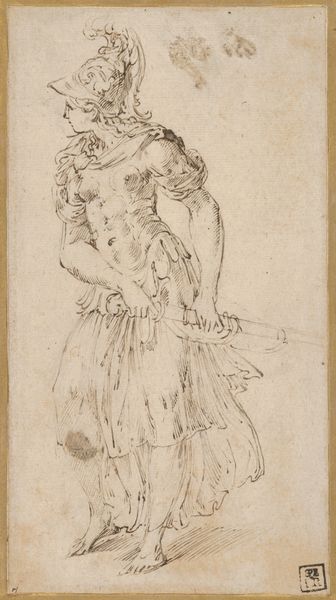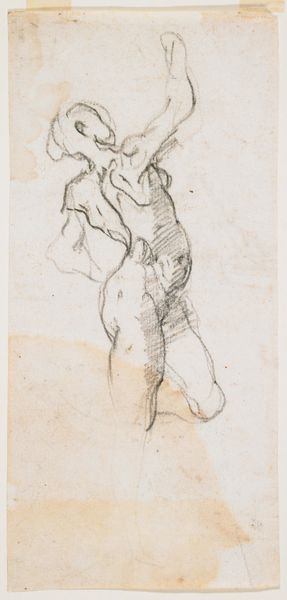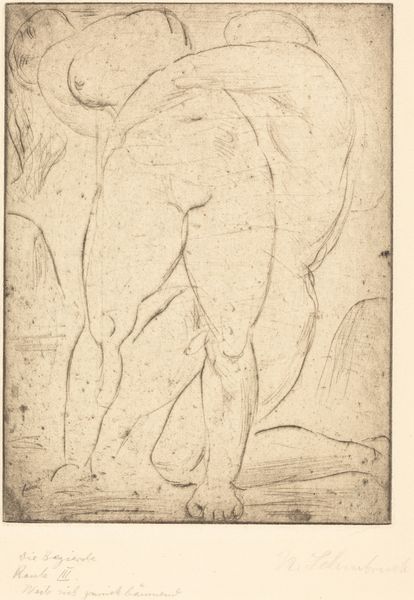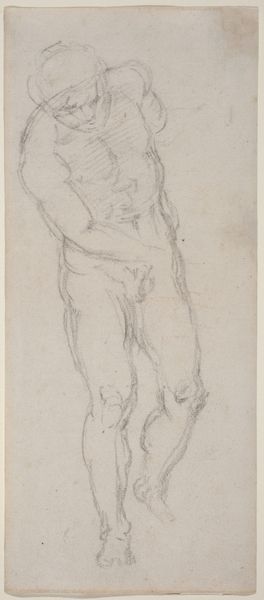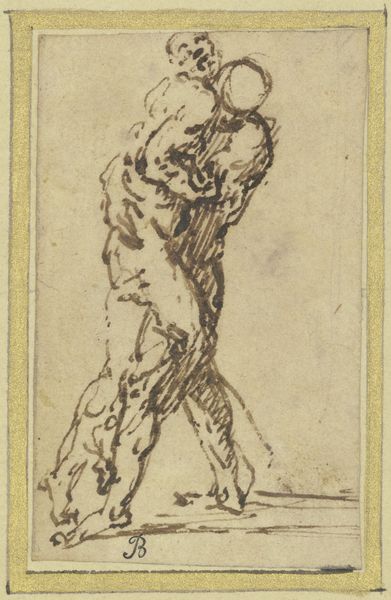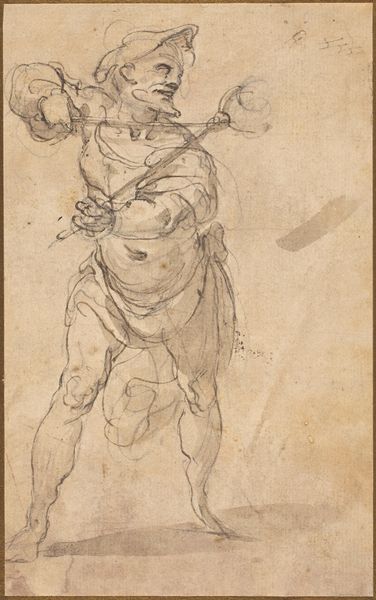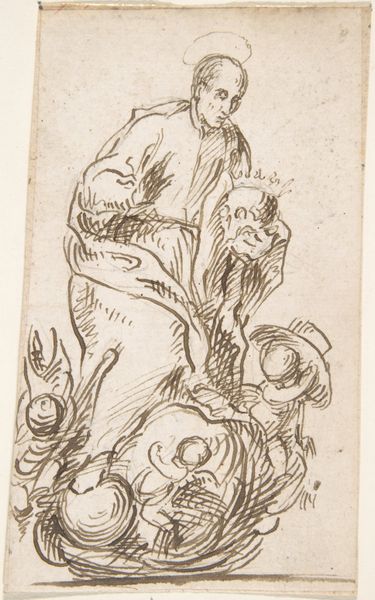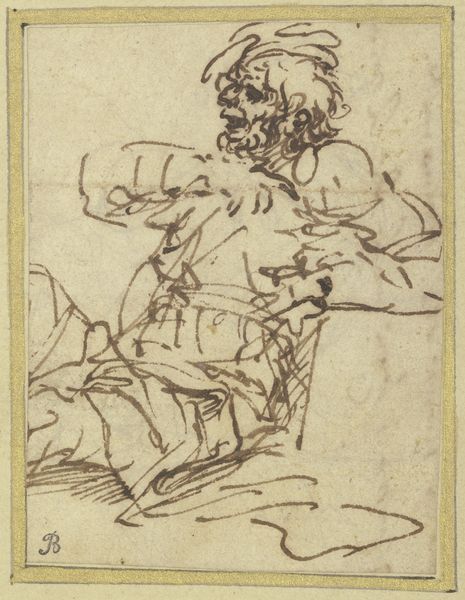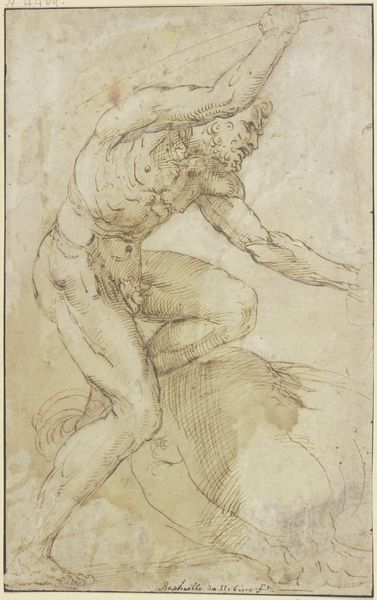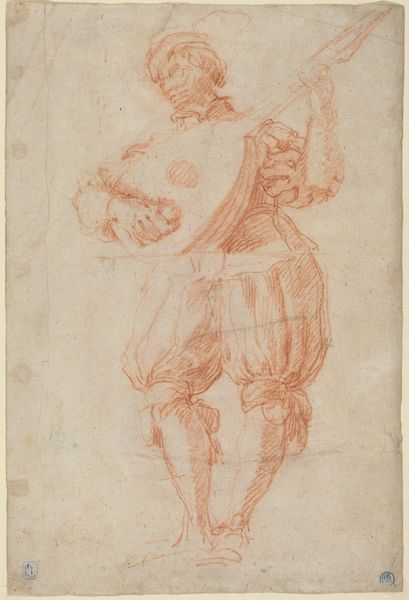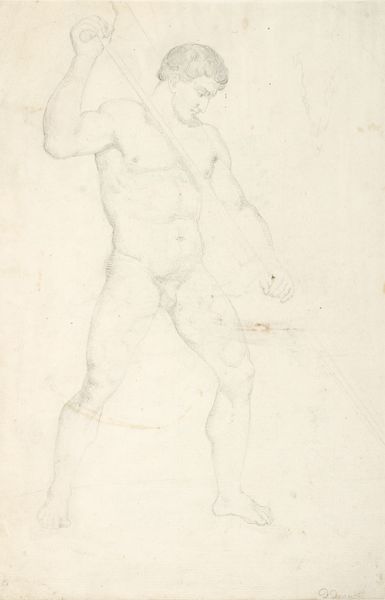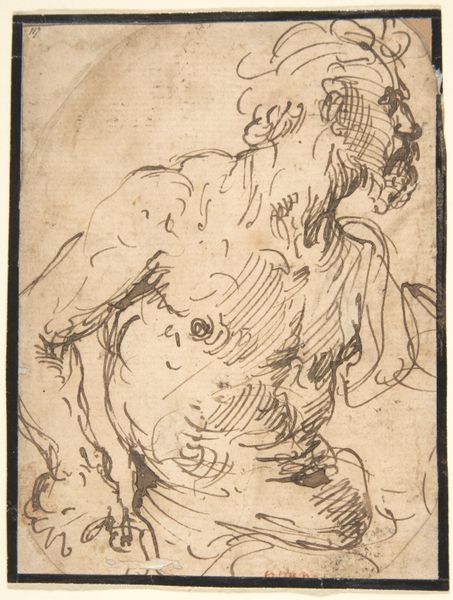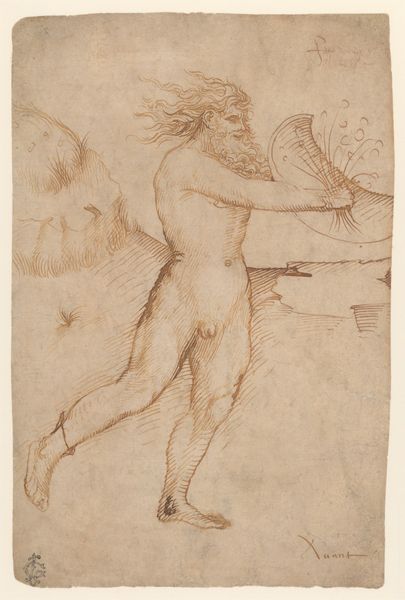
drawing, paper, graphite
#
portrait
#
drawing
#
figuration
#
paper
#
11_renaissance
#
graphite
#
academic-art
Dimensions: 240 × 177 mm
Copyright: Public Domain
Editor: Here we have William Blake's "Study of the Figure of Agnello Brunelleschi," crafted around 1826 with graphite on paper. The figure has a compelling and slightly unsettling presence. How might we formally approach its visual elements? Curator: Considering the graphic construction, observe the network of lines that define form, rather than simply delineate contour. How would you characterize the treatment of volume and space? Editor: The hatching seems almost frantic in places, but creates volume effectively. But the forms seem to exist independent of conventional perspective, like elements on a collage. Curator: Precisely. Note also how Blake uses a rather dry medium to create visual tensions between flatness and depth. Do you detect the impact of Academic principles here? Editor: I think I see it, sure. Like the strong muscularity in the figure, but also there's an unreal quality – he doesn't feel truly grounded. What do make of that? Curator: Blake subverts realism by interweaving what could be anatomical and mythological components. The scale detail and overall morphology propose the figure as both divine and monstrous. The drawing thus creates visual play in terms of meaning by not fully resolving itself into any easy representational order. Editor: So it’s in these tensions that meaning emerges? I see the work more clearly now. Thanks. Curator: My pleasure. Such analytical inspection allows for us to explore those tensions inherent in Blake’s aesthetic philosophy itself.
Comments
No comments
Be the first to comment and join the conversation on the ultimate creative platform.
